Splatoon 2 (Nintendo Switch) Review
By Tomas Barry  18.07.2017
18.07.2017
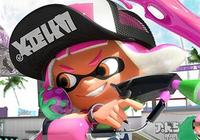
One of the most highly thought of games from the Wii U is, without a doubt, the original Splatoon. Its distinct brand of quick-fire, four vs. four territorial paintball multiplayer, where the objective is to cover the map in as much of your team's ink as possible, turned out to be a winning formula. Players fell in love with the bizarre and quirky creatures known as the Inklings, but their ability to transform from humanoids into squid, to traverse ink wherever it's been sprayed, was the under-pinning mechanism that pulled the whole thing together so nicely. It was also encouraging to see Nintendo enter the world of online multiplayer, establishing a new franchise with a clear emphasis on this as a core experience.
Not only was it the most successful new intellectual property on Wii U by some margin, but by March 2017, worldwide sales of Splatoon reached a very impressive 4.8 million. There's no doubt, then, that Nintendo deserves plenty of praise for having found a colourful and alternative niche from within the world of bland, militant and washed-out competitive multiplayer shooters. However, now the Switch is out there, which far exceeds the limited reach of the Wii U, and seems like the perfect platform to grow the franchise, what lies in store for Splatoon 2?
While nobody can blame Nintendo for wanting to provide a second chance for some of the brightest and most neglected gems from the Wii U, 4.8 million shows that Splatoon doesn't fall into that category. As such, a bare-bones upgrade to 1080p, along with some gameplay tweaking, was never going to suffice for the Switch version, especially since this is a sequel. Despite that, some reservations have been expressed, based on what's been seen over the build-up, to the effect that, according to some, Splatoon 2 might better have been dubbed Splatoon Deluxe.
Indeed, there is a degree of reproduction going on in Splatoon 2. Inkopolis Square looks near identical to the original hub, except a little more compressed, and elsewhere the multiplayer maps, while different (except for returning maps like Moray Towers), have common themes, such as a skate park and warehouse, and seem directly influenced in terms of core design by the original set of levels. It is, in the main, the same core experience that existing fans will feel accustomed to, but in various domains, Splatoon 2 has more polish and a greater sense of balance. Characters such as Sheldon, the NPC seller of weapons, are notably improved in both detail and quality of animation, the latter of which really helps up their charm-factor and their overall visual impact.
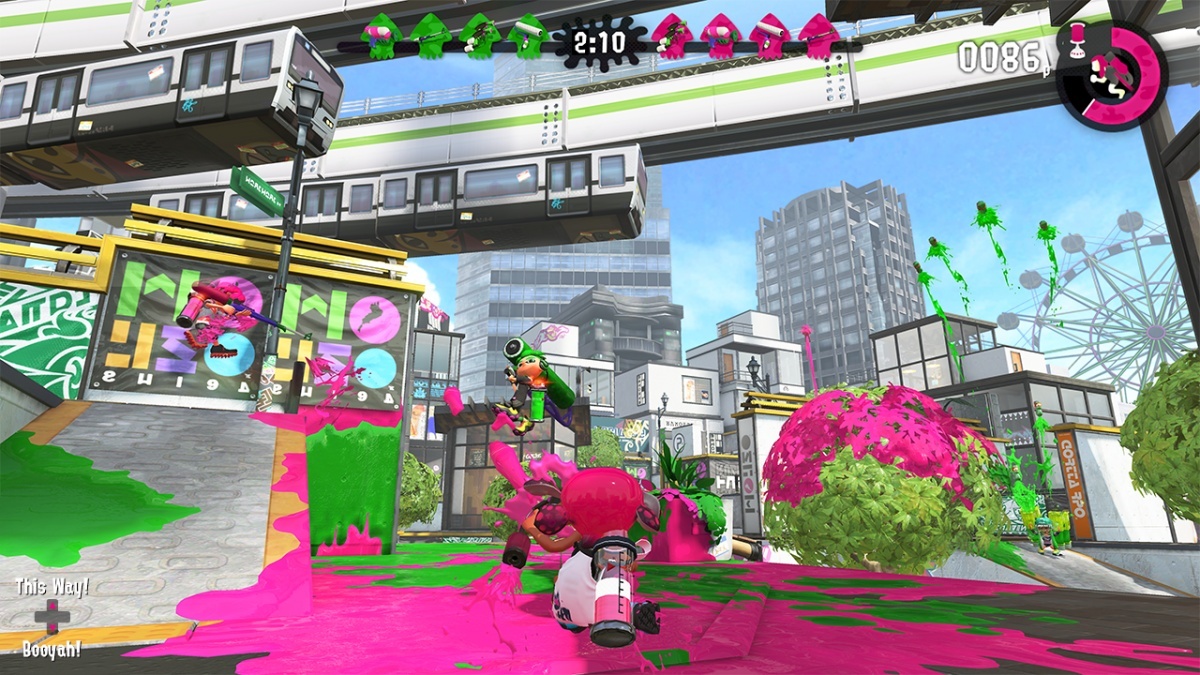
The core multiplayer mode, Turf War, which is the only mode available until players move up to being ranked at level 10, remains a glorious three-minute adrenaline burst, especially when your four-man team works together successfully. That said, it can be a little frustrating when cobbled amongst a hopeless team, although since matches are only three-minutes, they are still fun to persist in. Covering the maps in your team's ink is a surprisingly satisfying pursuit, and while it's a simple objective, it doesn't really lose its appeal. It's also such a small snippet of time that with the portability of Nintendo Switch, players will be able to sneak matches in much more frequently. That's also true because there are plenty of personal gains to be made from the XP, with a huge variety of weapons, shirts, headgear and shoes to unlock and purchase, all of which receive enhancements or upgrades of sorts as one progresses.
This element of personal reward is slightly more quirky and playful than its serious competitive multiplayer shooter counterparts, but there's still plenty of strategy involved, with each item harbouring special attributes that can be used strategically. Early on, for example, during a phase of forgetting to reload (achieved by morphing into a squid with ZL and swimming through your team's ink) a decent improvement in fortunes is achieved by purchasing gear that ups ink capacity. As players level up, these capacities seem to broaden, which generally makes higher-levelled players more dangerous, although the modifiers are there to somewhat level things up.
The maps this time around seem a little more strategic and conscious of the need to keep the action flowing, with thoughtfully designed intersecting routes for Inklings to use in sync to their own advantage. Some notable highlights include Musselforge Fitness, playable in a more basic form in the earlier Testfire, which is small but still filled with some sneaky passages and opportunities to flank, and there is also Starfish Mainstage, which is similarly compressed and hectic. Other maps, such as the returning Moray Towers, complete with its futuristic-city backdrop, offers a nice contrast thanks to its verticality, but generally the maps that keep the action centralised seem to be the best. Some of these stages offer interactive elements, although it's hard to pay much attention when busy inking.
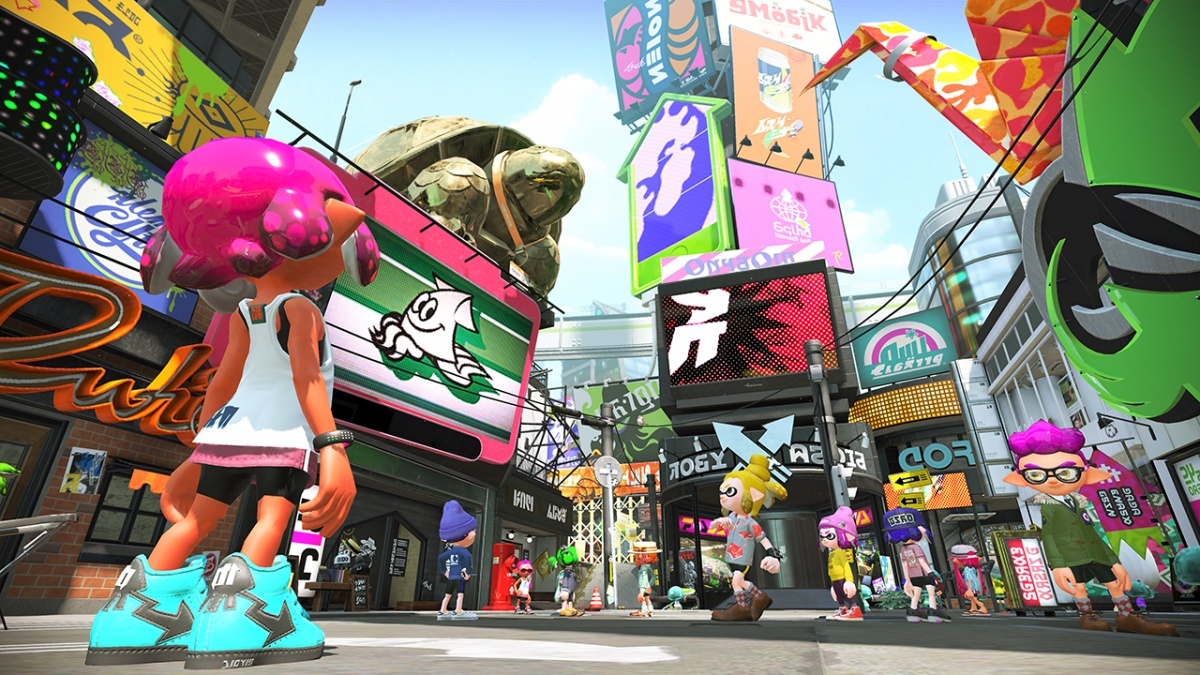
Once players reach the ranked multiplayer, they are able to participate in three returning modes of the original. Tower control sees Inklings duel it out for control of the Tower, which requires quick and adaptive tactics. That's especially true since checkpoints have been added this time, which means teams can go about re-capturing in a different (more interesting and tactical) way, when compared to the original. Rainmaker requires players to pick-up the chargeable weapon, then take it to the opponent's base to score, an inverse capture-the-flag scenario that provides a lot of laughs and close-calls. The rainmaker weapon itself requires more precision, so it's not a case of charge and release as it was in the original. This is a welcome alteration, which makes a notable difference. The last mode in ranked play is Splatzone, which sees an area designated as the zone, which players fight for control of, like King of the Hill. This hasn't been tweaked much, except for an added HUD-element to show how much more ink is required to control the zone. On balance, however, it's still one of the best modes to get absorbed in.
Another hugely important ingredient to Splatoon 2 is its motion controls. When testing using both the Pro Controller and the Joy-Con, some degree of horizontal manipulation (even swivelling) was possible with motion-input. However, in order to get one's head around the motion-influence, it seems that most people settle on using motion-input to control the vertical axis and the analogue stick to aim horizontally. Beginners will no doubt find that it takes some time to get used to this principle - however, once accustomed, it is amazing how quickly it becomes second nature. The superior control method is by far that of the Pro Controller, but playing in handheld mode was also quite liberating. It's also possible to modify the input sensitivity and inversion for TV/Tabletop mode and handheld mode independently, which is quite useful. Overall, only an impatient player would turn the motion input off, since they certainly add another unique element to the experience.
Before leaping into the multiplayer world of Splatoon 2, undeniably the main course, this iteration's Hero Mode is a much more complex and thoughtful exploration of Splatoon's weapons and tactics in a single-player context. Unlike the original, which only focused on one weapon, this mode focuses on introducing new weaponry, and challenges at a very consistent rate. While many players will overlook this mode because the multiplayer is there and available from the off, those who give Hero Mode the time it deserves will find an expertly-crafted experience; Nintendo through and through. The boss battles are wacky, challenging and bound to raise a genuine smile, the craft of each level is thoughtful - and in some ways it is a shame this didn't end up as a Mario series since then the single-player would be four times as long! While Hero Mode is on the short side and won't keep players absorbed alone for longer than a month or so, it does feature many more collectables, which is a good reason to come back for a second helping. After gorging on the more varied multiplayer components, coming back to this will be at the very least, a nice change of pace.
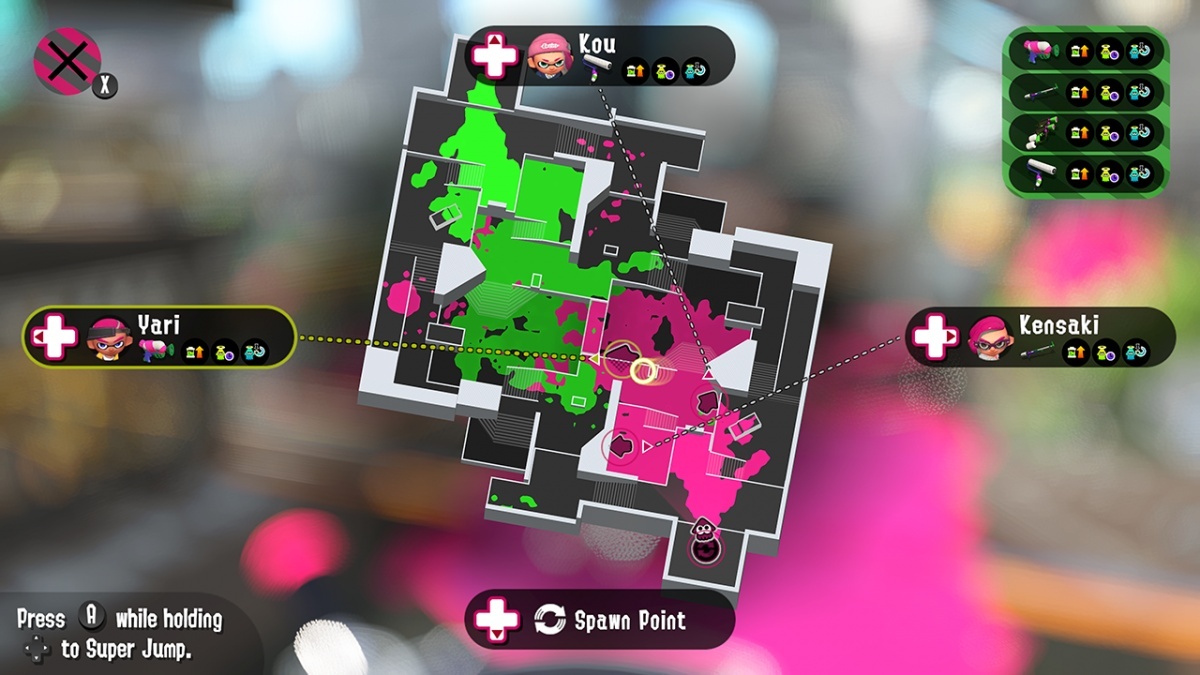
Perhaps the most significant addition to Splatoon 2 is Salmon Run, a two-to-four player co-operative mode where the emphasis is on team-work to fend off 'salmonoid' hordes, collect eggs and defeat the Boss Salmonid, all of which requires real team-work. It's playable online and locally, and without a doubt quite a challenge beyond 10% intensity. It's nice to see another unique take on a common shooter gameplay mode, but since this is the only truly new addition to Splatoon 2, it could have been a bit more expansive in terms of its map size and variety. That said, this is something that might occur with DLC in the future. Ultimately, it's a welcome addition, but not really a filler when you compare it to the inventive single-player Hero Mode and other multiplayer components.
In terms of disappointments, Splatoon 2 does have a few niggling issues. It does seem rather astonishing that, for a second time, the inability to change an Inkling's load-out in-between matches remains. This is part and parcel of most competitive shooters, and it seems a bit baffling to leave this as it was. It also feels beyond archaic to have to back out of a lobby by closing down the game entirely, since once you have joined there isn't any other way to quit - whether or not this is something that might be addressable in the form of a patch remains to be seen. Elsewhere, the rather rigid rota for multiplayer is served up to the player on the hour by the Squid Sisters in the form of an un-skippable cut-scene. This will quickly become a massive pain in the proverbial backside and, again, there's really no reason why it should be this way. Considering how fluid and fast-paced the actual gameplay is, it just seems crazy not to identify and address these minor grievances.
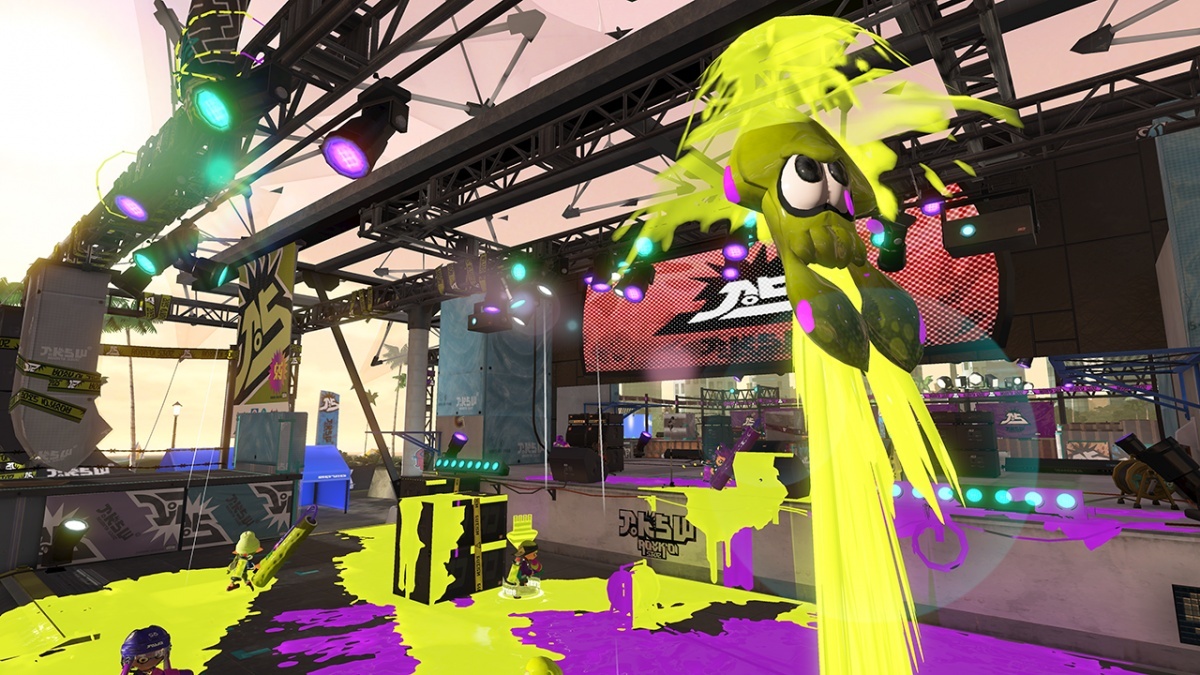
Cubed3 Rating
Great - Silver Award

Overall, Splatoon 2 is a brilliant and refreshing competitive multiplayer experience, both online and offline, which really fills a void in that regard for the system. Although the changes are fairly minor, it's hard to see the existing fan-base not leaping on-board in hordes, since more than anything else, the quirky franchise needs a more sustainable home platform and Nintendo Switch has proved itself to be just that. While this sequel will feel initially quite familiar to established fans, a great deal of attention has been paid to the nuances of the multiplayer dynamic, leading to an altogether much improved sequel, which is worthy of anyone's attention, whether an existing fan or a newcomer. It's a shame match-making options couldn't have been broadened, but with things such as voice chat finally introduced, this is a step in the right direction. It will be interesting to see how Splatoon 2 expands. It is presumed DLC will be offered to support the multiplayer domain, but the much-improved Hero Mode might also open up the door for better and even more expansive single-player content in the future. Overall, Splatoon 2 is one of the best games available on Nintendo Switch.
Comments
Comments are currently disabled

 Sign In
Sign In Game Details
Game Details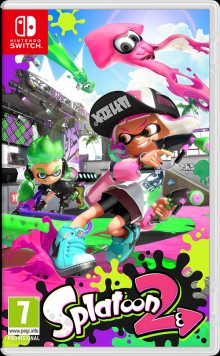
 Out now
Out now  Out now
Out now  Out now
Out now  Out now
Out now  Subscribe to this topic
Subscribe to this topic Features
Features





 Top
Top

